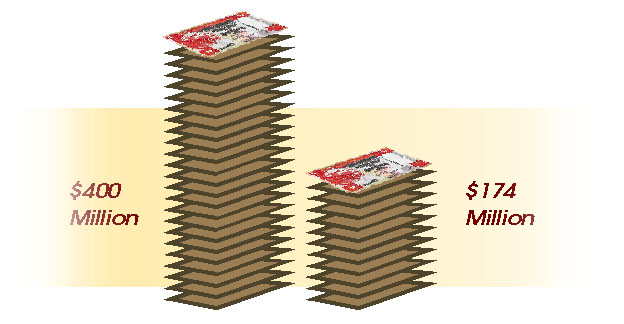|
|
||
As part of our effort to provide an enabling environment for the delivery of EPP, we announced in July 1999 via Finance Bureau Circular Memorandum (FBCM) 12/1999 the creation of the "Save & Invest Account" facility. This has started the change in our spending culture - from the old days when Controlling Officers were worried about being penalised for their "underspending", to nowadays when they are rewarded for the "favourable variance" resulting from their effort to economise. Since its implementation a year ago, we have witnessed positive responses from and substantial changes in spending culture of bureaux and departments. To reciprocate Controlling Officers' efforts to economize as reflected from the handsome balance, we have announced in July this year via FBCM 17/2000 how we are to continually provide an enabling environment by liberalizing the use of the "Save & Invest" Account. This is what this article is about. |
||
A year Ago ...................In July 1999 we announced the good news of introducing a new initiative, the "Save & Invest Account". Through the use of this new facility, bureaux and departments can save up part of their cash-limited Departmental Expenses (DE) unspent balance with a view to providing "seed money" required to achieve productivity gains in future. The "savings" made in respect of a year can be used for the subsequent three years before they lapse, e.g. the amount saved from "underspending" in 1998-1999 may be used in 1999-2000, 2000-01 and 2001-02. Total opening account balance for all bureaux and departments in light of their saving efforts in 1998-99 amounted to $174 million. Since then ........................The launch of the "Save & Invest Account" has not only provided bureaux and departments with an alternative source of funding to meet their requirements throughout the year, but more importantly it has helped to shape up the spending culture and performance of bureaux and departments. Since its implementation, 14 bureaux/departments have made 16 withdrawals amounting to $16 million in total. Applications for these withdrawals range from updating IT equipment, installing video conference equipment, engaging the service of professional PR firms, carrying out energy retrofitting, funding an e-Gazette project, conducting staff training courses and buying CD-counting and other equipment to expedite law enforcement process. Now ........................Based on the actual savings in cash-limited DE in 1999-2000, a total of $400 million has been credited to individual Controlling Officers' "Save & Invest" Accounts. Less the 16 withdrawals from the 14 bureaux/departments amounting to $16 million in total, the total balance available for use now stands at $558 million! So ...................In July this year, just one year after the launch of the "Save & Invest Account", we announced the good news of introducing a number of enhancement measures to enable bureaux and departments to make fuller use of this facility. First, we have widened the scope and eligibility for the use of the Account. Withdrawal from the Account will no longer be limited to one-off initiatives leading to productivity gains. Instead, apart from the creation of civil service posts and the payment of allowances, bureaux and departments may draw from the Account to spend on any purposes, provided that such spending is within the scope and ambit of the relevant heads and subheads of expenditure. They may also draw from the Account to spend on major systems and equipment under Capital Works Reserve Fund (CWRF) Head 708 and on computerisation projects under CWRF Head 710. Secondly, as a corollary to the widened scope and eligibility for withdrawal, we have also simplified the requirement for application on the use of the Account. We only need to know the purpose of the withdrawal and the funding arrangement (total amount, cashflow requirement, etc.). That's all! More Details .................If you like to know more about the revised arrangement of the "Save & Invest" Account, please refer to Finance Bureau Circular Memorandum (FBCM) 17/2000. |
||


